|
Who was young boy in photograph
of Lincoln conspirators execution?
In the sweltering Washington City heat of July 7, 1865, Alexander Gardner photographed one of the most famous executions in American history.
In all, he reportedly took seven photos of the execution of four Abraham Lincoln conspirators involved in the April 14 assassination of the president. The most widely reprinted image of the series shows the bodies of Mary Surratt, Lewis Powell, George Atzerodt and David Herold hanging limp and motionless from the scaffold at Old Arsenal Prison.
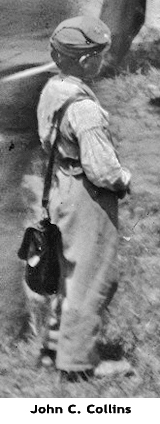 But, perhaps the most unusual aspect of the photo is the image of a young boy standing in the midst of Union soldiers and spectators in the left foreground. Two questions eventually arose: Who was the boy and how did he obtain access to the execution? But, perhaps the most unusual aspect of the photo is the image of a young boy standing in the midst of Union soldiers and spectators in the left foreground. Two questions eventually arose: Who was the boy and how did he obtain access to the execution?
The answers were not available until 1914 when the boy himself wrote an article that appeared in the April 12 editions of The Washington Star. “Recollections of Boston Corbett” was written by John C. Collins who noted that he was the “regimental mascot” of the 16th New York Volunteer Cavalry. This was the regiment that hunted down Lincoln assassin John Wilkes Booth who was shot and killed by a regiment sergeant, Boston Corbett.
In the article, Collins focused on the character and career of Corbett and wrote that the soldier gave him his autographed photograph after he had killed Booth. Collins noted that Corbett “placed the forefinger of his right hand in the palm of my hand and saying that was the finger that had pulled the trigger.”
Collins’ brother, William, allowed the boy to accompany him on his return to the camp of the 16th following a furlough. John could not return home, however, as William was wounded and the regiment captured. Later, now stranded with the regiment, John was given a pony and an altered uniform and shared in much of the life of the 16th. That resulted in attendance at the execution.
There was strict security at the prison with guards at each entrance and signed passes required for admittance.
“I have never quite known exactly how I did it,” Collins wrote, “but I actually went through all these lines of troops without a pass, and in less than twenty minutes from the first attempt, I was stationed not thirty feet away from the scaffold and in full view of everything said or done in connection with the execution. I suppose the fact that I was dressed in uniform had much to do with it.”
John is believed to be the youngest of the witnesses to the historical execution.
He wrote that he had reason to regret his boldness after the trap fell, however.
“I turned away with a sensation of horror and faintness and a feeling that I have never since lost, that I had no wish ever to witness another such scene.”
It’s believed that Capt. Edward Doherty of the 16th let John into the prison yard.
John Collins went on to attend and graduate from Yale University. He received a bachelor’s degree from the Yale Divinity School in 1875 and a divinity degree three years later. He served as an evangelist and missionary in Nebraska, was superintendent of the New Haven (Conn.) Gospel Union, editor-publisher of The Gospel Union News and director of the International Christian Workers Association.
He founded the New Haven Boys Club in 1874 and served as its director until 1877. He also was instrumental in establishing the Boys Clubs in the United States and Canada.
Collins died in New Haven in 1928 at age 77.
|


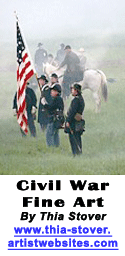
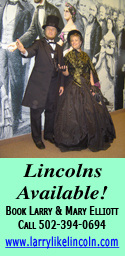

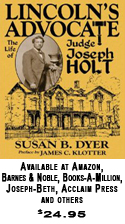
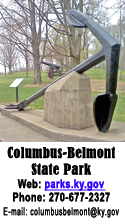







 But, perhaps the most unusual aspect of the photo is the image of a young boy standing in the midst of Union soldiers and spectators in the left foreground. Two questions eventually arose: Who was the boy and how did he obtain access to the execution?
But, perhaps the most unusual aspect of the photo is the image of a young boy standing in the midst of Union soldiers and spectators in the left foreground. Two questions eventually arose: Who was the boy and how did he obtain access to the execution?